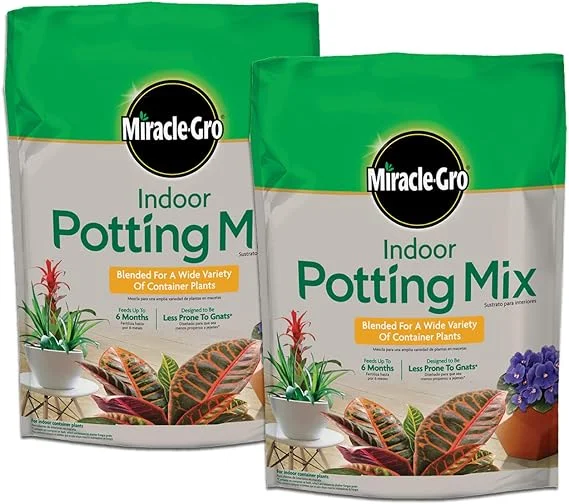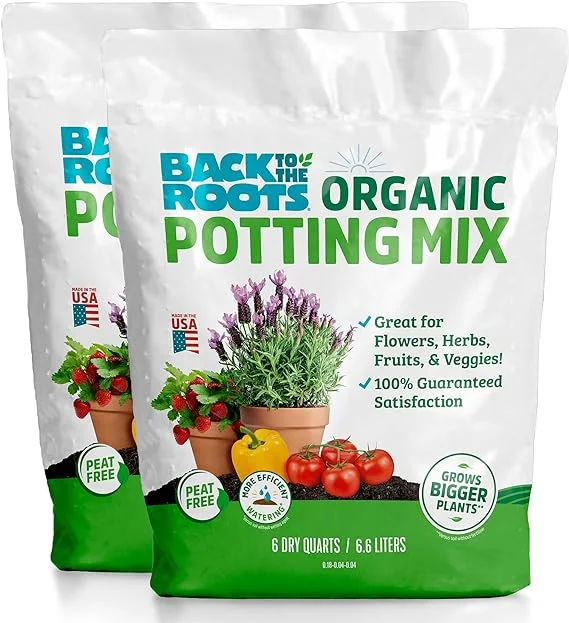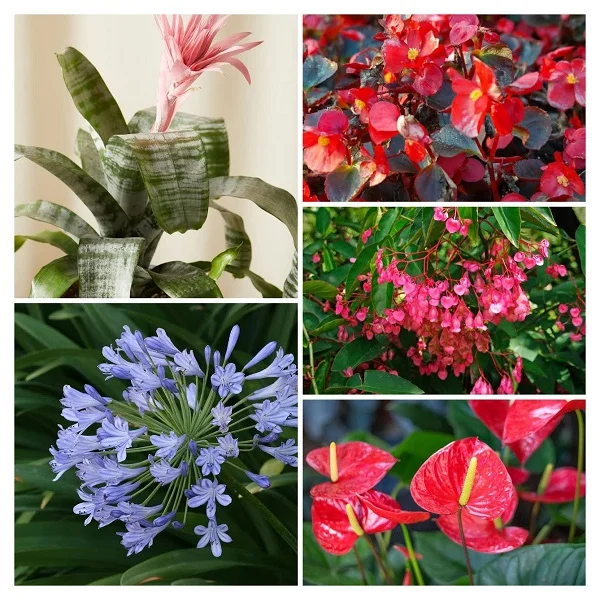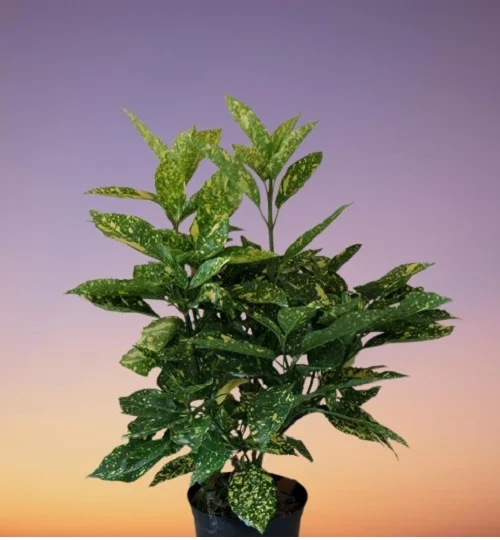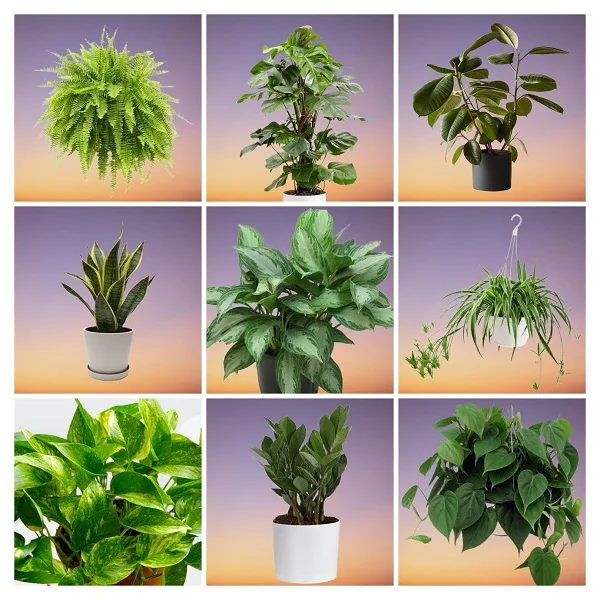Zebra Plant (Aphelandra squarrosa) Care Indoors, Propagation and Problems with Solutions
Some links in this post may be affiliate links
Aphelandra squarrosa (Zebra Plant) flourishes in bright indirect light, warm and humid conditions and consistently moist, rich, well-drained soil coupled with monthly feeding in the growing season.
Zebra Plant is grown indoors for its all year round large leaves with silvery veins which provide an attractive feature and for the golden cone-like bloom which provides color for a short time.
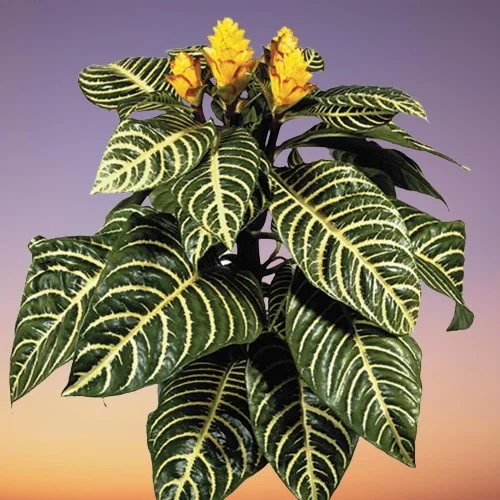
Botanical name: Aphelandra squarrosa
Family: Melastomataceae
Common name: Zebra Plant
Origin
Aphelandra squarrosa is native to the Atlantic forest vegetation of Brazil.
How big do Aphelandra squarrosa grow?
Aphelandra squarrosa can grow to a height of 6 feet and 5 feet wide. To prevent it from becoming too big, regular pruning is needed.
What are the different types of Aphelandra squarrosa?
The basic species of Aphelandra squarrosa is a vigorously growing plant which can become too large and therefore is not ideal for growing indoors. The usual choice for growing indoors are the less vigorous varieties.
The less vigorous varieties include Louisae, which is a 1-2 feet sturdy bush with red-tipped bracts.
More compact types of Zebra Plant include Brockfeld and the golden Dania. Fritz Prinsler has the most eye-catching veining.
Other newer varieties of Zebra Plant are Apollo with white veins and Red Apollo which has a blush of red on the stems and on the leaf undersides.
Is Aphelandra squarrosa toxic?
No. Aphelandra squarrosa is non-toxic to both humans and pets as indicated by ASPCA. The plant is safe to grow in the home.
Where to Buy Zebra Plant
Zebra Plants are a beautiful addition to any plant collection. If you are looking to add Aphelandra squarrosa to your collection, you may acquire these plants online from Amazon (Link to Amazon).
How to Care for Aphelandra squarrosa Indoors
To care for Aphelandra squarrosa indoors, provide bright indirect light, warmth of 18-260C, humidity of 60-70% and consistently moist, rich, well-drained potting soil coupled with monthly feeding during the growing season.
Zebra Plant requires pruning to keep it neat and tidy as well as discourage pest and disease infestation. Repotting is needed when the plant becomes pot-bound. Keep reading for more on these growing conditions and how to achieve them.
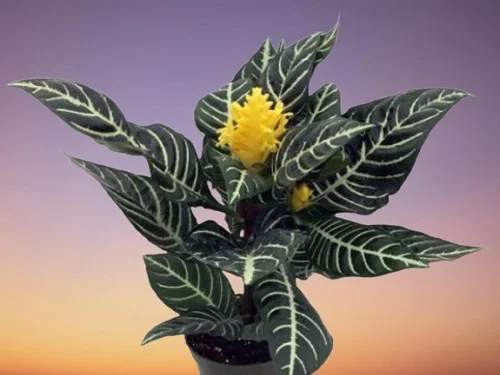
Watering
How often should I water Aphelandra squarrosa?
Water Aphelandra squarrosa liberally in spring and summer while allowing the top 1-2 inches of soil to dry out to keep the soil moist through out. Take care not to overwater to prevent rotting, yellowing and leaf loss.
Lessen watering in fall and winter to maintain the soil slightly moist. Do not allow the soil to dry out completely as it can lead to wilting and leaf drop.
Use water that is at room temperature to avoid cold shock which can result in slowed growth and leaf fall. Confirm that the water is free of chlorine and other dissolved chemicals to prevent browning of leaf edges.
Pot the plant in free-draining soil and a pot that has a drainage hole to prevent the soil from getting soggy as it can lead to root-rot and eventual death of the plant.
Light Requirements
Do Zebra Plants need sunlight?
No. Zebra Plants grow best in bright indirect light; put the plants infront a large, brightly-lit window. Exposing these plants to direct sunlight will result in sunscorched leaves (leaves with ugly brown marks).
If the light is too low, the plants will become leggy with small, pale leaves and wide spaces between the leaf nodes. Where natural light is not sufficient, you may use full spectrum grow lights to supplement it.
Turn the pot regularly to ensure the plant receives light on all sides for uniform growth and prevent leggy growth.
Temperature & Humidity
Aphelandra squarrosa thrives in a warmth of 18-260C. Protect it from sources of drafts to prevent wilting, stunted growth and leaf drop.
Zebra Plants need a humidity of 60-70% to blossom. To elevate humidity, group the plants together, set the pot on a wet pebble tray or use a cool mist humidifier. Do not mist the plant and maintain a good air circulation to prevent fungal diseases.
Potting Soil
The best soil for Zebra Plant should be rich in organic matter and free-draining to prevent it from getting soggy while providing the required nutrients. A blend of 2 parts all purpose potting mix and 1 part perlite is ideal for this plant.
Fertilizer
What is the best fertilizer for a Zebra Plant?
Feed your Zebra Plant with a balanced, water-soluble fertilizer every 3-4 weeks in spring and summer for a lush growth. Do not feed in fall and winter as growth is minimal at this time therefore the plant does not it.
Pruning & Grooming
How to prune Aphelandra squarrosa?
Pruning Aphelandra squarrosa involves removal of dead blooms and leaves to maintain the plant neat as well as discourage pest infestations.
Regularly clean the leaves by damp-wiping with a soft cloth to get rid of dust and also discourage pest infestations.
How to make Zebra Plant bushy?
To make Zebra Plant bushy, cut it back after flowering to 1/3 of its height to encourage new growth. This will keep the plant bushy and compact.
Repotting
Repot your Zebra Plant at the beginning of the growing season (spring to early summer) only when the plant becomes pot-bound as it blooms best when root-bound.
Use a pot one size larger than the previous one. Make sure that the pot has a drainage hole and the soil is well-draining to prevent waterlogging which can lead to root-rot. Check out these ceramic planters with drainage hole on Amazon.
Aphelandra squarrosa Propagation
Aphelandra squarrosa (Zebra Plant) is propagated from stem cuttings which can be rooted in water or in soil. The best time to propagate Zebra Plant is at the beginning of the growing season (spring to early summer) when in active growth to hasten establishment.
1. Propagating Aphelandra squarrosa from stem cuttings in water
- Take stem cuttings of about 4-6 inches from a healthy plant. Ensure each cutting has at least 2 leaf nodes as this is where new growth with sprout from.
- Dip the lower cut end of the cutting in a rooting hormone to hasten rooting.
- Place the cuttings in a jar of plain room temperature water or in a propagation station. Make sure the nodes are submerged, but not the leaves
- Place the set up in a warm, well-lit spot away from direct sunlight. Change the water every 5-7 days to prevent fungal growth.
- Root should appear in 2-3 weeks. When the roots are about 2-4 inches long, transfer the cuttings into individual pots in moist, well-draining soil to prevent waterlogging.
- Position the set up in a warm, well-lit place away from direct sunlight to prevent scorching.
- Maintain the soil moist until there is substantial growth after which you can begin routine care.
2. Propagating Aphelandra squarrosa from stem cuttings in soil
- Take stem cuttings of about 4-6 inches from a healthy plant. Ensure each cutting has at least 2 leaf nodes.
- Dip the lower cut end of the cutting in a rooting hormone to encourage rooting.
- Fill a small pot that has drainage hole with well-draining soil and moisten the soil slightly.
- Insert 2-3 inches of the lower end of the cutting in the moist soil.
- Cover the set up with clear polythene to create a greenhouse effect in order to promote rooting.
- Place the set up in a warm, brightly lit spot away from direct sunlight. Rooting should occur in about 6 weeks.
- Allow the new plants to be well established before transplanting after which routine care can begin.
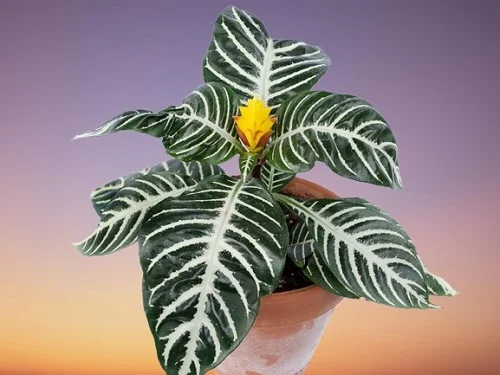
Aphelandra squarrosa Problems & Remedies
Aphelandra squarrosa (Zebra Plant) problems are leaf fall (drop), brown leaves, plant dying, leggy growth, wilting and drooping leaves, brown leaf tips and edges, pests and diseases among others. Keep reading for more on these problems and how to fix them.
Leaf fall (drop)
Why are the leaves on my Aphelandra squarrosa falling off?
Your Aphelandra squarrosa leaves are falling off due to inconsistent watering, soggy soil, temperature, too little light, or pests infestations.
How to fix it
Inconsistent watering: Do not water on a schedule. Water when the top 1-2 inches of soil dry out but do not allow the soil to dry out completely.
Soggy soil: Use well-draining soil and a pot with a drainage hole to avoid waterlogging.
Temperature stress: Keep the plant away from sources of drafts like windy doors, drafty windows, AC units, heat sources, hot air vents among others.
Too little light: Position the plant in bright indirect light away direct sunlight or instal a grow light if the natural lighting is not adequate.
Pest infestations: Regularly inspect your plant for these pests and carry out timely control measures.
Brown leaves
Why are the leaves on my Aphelandra squarrosa turning brown?
The main causes of brown leaves on your Aphelandra squarrosa are inconsistent watering, temperature stress, direct sunlight, or aging.
How to fix it
Inconsistent watering: Water when the top 1-2 inches of soil dry. Never allow the soil to dry out completely.
Temperatute stress: Protect the plant from drafts emanating from AC units, heat sources, windy doors and others.
Direct sunlight: Keep the plant away from direct sunlight or use a light curtain to filter the sunshine.
Aging: This is a natural process; as the plant matures the lower leaves turn brown and begin to die.
Plant dying
Why is my Zebra Plant dying?
Your Zebra Plant may be dying due to root-rot disease which is prevalent in soggy soil due to poor soil drainage. It presents with rotting stems, yellowing of leaves and eventual collapse of the plant
How to revive a dying Zebra Plant?
- Slip the plant out of its pot, wash off the soil and inspect the roots.
- Brown-black, mushy roots indicate root-rot; cut them away. In addition, cut away any stems showing any signs of rot.
- Disinfect the healthy roots and the entire plant with a copper-based fungicidal solution as indicated by the manufacturer.
- Disinfect the pot with the fungicidal solution or use a fresh pot to repot the plant in fresh potting soil.
- Make sure that the pot has a drainage hole and the soil is well-draining to prevent waterlogging.
- Water the plant with the fungicidal solution and place it in a warm, brightly-lit spot.
- Do not water the plant again until new growth appears and avoid overwatering and soggy soil thereafter.
Leggy growth
Why is my Zebra Plant leggy?
Leggy growth on your Zebra Plant is caused by lack of pruning, low light, and poor feeding.
How to make fix a leggy Zebra Plant?
Lack of pruning: Trim the leggy stems after flowering to 1/3 of its height to encourage a bushier growth.
Low light: Position the fern infront of a large, brightly-lit window or use a grow light if you do not have enough light in your home.
Poor feeding: Both underfertilizing and overfertilizing can cause leggy growth. Therefore, feed the fern with a balanced, water-soluble fertilizer every 3-4 weeks in spring and summer. Ensure to follow the manufacturers instructions.
Wilting & drooping leaves
Wilting and drooping leaves on Zebra Plant are caused by underwatering, temperature stress, dry air, and spider mites infestation.
How to fix it
Underwatering: Water when the top 1-2 inches of soil dry out but do not allow the soil to dry out completely.
Temperature stress: Keep the plant away from drafts emanating from AC units, heat sources and others.
Dry air: Set the pot on a wet pebble tray, group the plants together or use a humidifier to raise humidity.
Spider mites infestation: Keep the plant well pruned and increase humidity to discourage the pests.
Brown leaf tips & edges
Too low humidity will cause brown leaf tips and edges in Zebra Plant as it prefers a warm and humid environment. To increase humidity, set the pot on a wet pebble tray or use a cool mist humidifier.
Brown leaf spots
Exposing Zebra Plant to direct sunlight will result in brown sunscorch marks on the leaves. Keep it away from direct sunlight. Position it where it will receive bright indirect light with no direct sunlight falling on the leaves.
Pests
Common pests on Zebra Plant are spider mites, scale insects and aphids.
How to fix it
- Isolate the affected plant to prevent spread to the other plants.
- Treat the plant with neem oil or an insecticidal soap. Ensure to follow the manufacturers' recommendations on the label.
- Regularly damp-wipe the leaves with a soft cloth to discourage the pests.
- Maintain the plant well pruned to discourage the pests.
- Set the pot on a wet pebble tray or group the plants together to increase humidity to minimize the pests infestations.
You liked it? Share on social media.
Related Content
Amazon Associates Disclosure
Homeplantsguide.com is a participant in the Amazon Services LLC Associates Program, an affiliate advertising program designed to provide a means for sites to earn advertising fees by advertising and linking to amazon.com.

